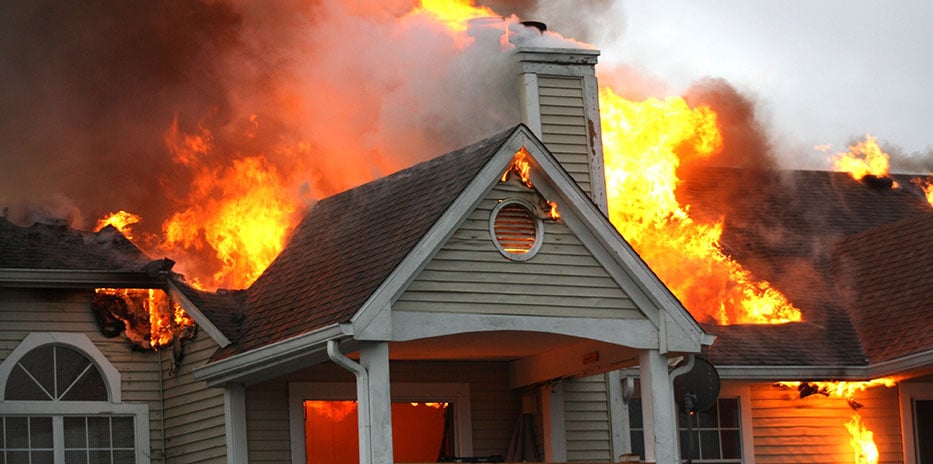Whether for ambiance or heat, both fireplaces and wood stoves are great during New Hampshire’s cold winters. They aren’t without risks, though, with the most significant being a chimney fire. Luckily, chimney fires are preventable as long as you know some basic safety.

5 Chimney Fire Prevention Tips to Keep Your House Warm and Safe
🔥 What causes a chimney fire?
The primary cause of chimney fires is creosote. Creosote is a highly flammable substance that accumulates inside the chimney flue (from the firebox to the top of the chimney). Creosote can naturally build up as wood is burned.
Too much creosote build-up can ignite while a fire is burning in the fireplace or wood stove.
Other causes of chimney fires include bird nests in chimney flues, other debris in chimneys, a damaged flue liner, burning inappropriate materials, and neglected maintenance. Creosote and other maintenance are, by far, the most critical risks to protect against, however.
1. Regular cleaning and inspection of your chimney
The best way to prevent too much creosote from building up is by having your chimney cleaned and inspected regularly. Regularly is generally once a year for most people, although more often may be needed if you’re primary heat source is your wood stove. While homeowners can get the tools to clean their chimneys themselves, it’s broadly recommended that they hire a professional chimney sweep to do the job. Cleaning chimneys is a dirty job; you can expect to get suit on everything and everywhere unless you’re experienced. More importantly, a chimney sweep will inspect the chimney for deterioration or damage that the average homeowner might miss.
Most homeowners have their chimneys cleaned in fall or spring; either is usually fine since creosote won’t build up when a chimney isn’t used over summer.
2. Check the chimney cap
The chimney cap goes over the top of the chimney. It keeps rain out of the chimney and -- more importantly for chimney fires -- prevents birds from building nests in the chimney itself.
Periodically look up to ensure the chimney cap is still in place. You can probably see it from the ground if you back up a ways in your yard (or across the street). If the cap is missing or looks bent up, contact a chimney sweep to inspect it.
Looking up at the cap is particularly important before using a fireplace or wood stove for the first time of the season, and doubly so if you have a seasonal place. The likelihood of a cap coming off and a bird nesting in a chimney is higher if a chimney hasn’t been used for a while.
3. Use seasoned firewood
Using seasoned (dry) firewood will reduce the build-up of creosote. Seasoned wood burns cleaner, producing less smoke and debris that goes up your chimney. Green (wet) wood can cause creosote to build up much faster.
4. Check smoke detectors
If you take these precautions, a chimney fire is unlikely, but it’s important to be protected if one ignites. Ensure you have properly operating smoke detectors and at least one near your fireplace or wood stove.
5. Make sure your New Hampshire home is insured
Insurance companies want to know if you have a wood stove, pellet stove, or other secondary heat source in your New Hampshire home. It’s not difficult to insure a home with a wood stove, and we here at HPM Insurance can help you check or find a policy that’ll cover chimney fires if they’re a potential risk.


